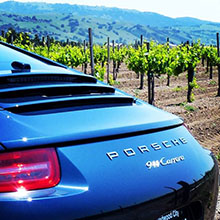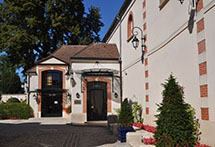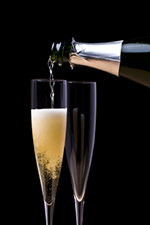|
| |
| Recent Labels |
| |
| Non-Vintage |
| |
| Nicholas Francois Billecart |
|
|
|
|
| |
| |
| |
Billecart-Salmon Brut 2004 Champagne |
Billecart-Salmon Brut 2004 champagne is a relatively recent release. See our Tasting Notes for a description of Billecart-Salmon Brut 2004 champagne.
| Billecart-Salmon Brut 2004 |
| Characteristics |
|
|
|
|
| Category: |
Basic |
Prestige Cuvée: |
No |
|
| |
| Ratings (on a scale of 100) |
|
|
|
|
| Champagne 411 |
87 |
April 2014 |
|
Average Retail Price |
| Wine Enthusiast |
na |
na |
|
(750 ml bottle) $80 |
| Wine Spectator |
na |
na |
|
|
|
|
|
|
|
|
Tasting Notes
Appearance: Medium yellow gold with fine lively bubbles.
Aroma/bouquet: Lemon,gunpowder, pear, flinty minerality.
Palate: Lemon, lemon zest, brioche, bitter almond, gunpowder and more flinty minerality.
Additional comments: Slightly off balance. Some sulfur blow off - possibly a faulted bottle. Will re-taste in the future.
| Brut 2004 Details
Label: Billecart-Salmon 2004 Champagne
House/Winery: Champagne Billecart-Salmon
Wine Category: Sparkling Wine
Region & Country: Champagne, France
Type (Style): Vintage
Sweetness Level: Brut
Dosage: na
Prestige cuvée: No
Vineyards: NA
Grapes: 70% Pinot Noir, 30% Chardonnay
Alcohol: 12%
Go to Champagne Details for a description of the above types, characteristics, and grapes. |
Billecart-Salmon Brut 2004
Production
Billecart-Salmon uses the méthode champenoise for their champagne production. Brut 2004 is composed of 70% Pinot Noir and 30% Chardonnay with 20% of the blend vinified in 5 year old barrels. Billecart-Salmon typically gives many of their vintage brut champagnes a dosage of 5 grams per liter or less, which qualifies them in to be classified as Extra Brut, but still allows them to be labeled as Brut.
The House incorporates a double debourbage process where solids in fresh juice settle to clarify the juice, then a second cold settling occurs at about 40 degrees Fahrenheit for a minimum of 48 hours. The process ensures the finest juice will be used for fermentation. The fermentation process typically takes place over 3 or more weeks at temperature not to exceed approximately 57 degrees Fahrenheit (typical fermentation at most houses is 1 week at about 68 degrees Fahrenheit).
|




